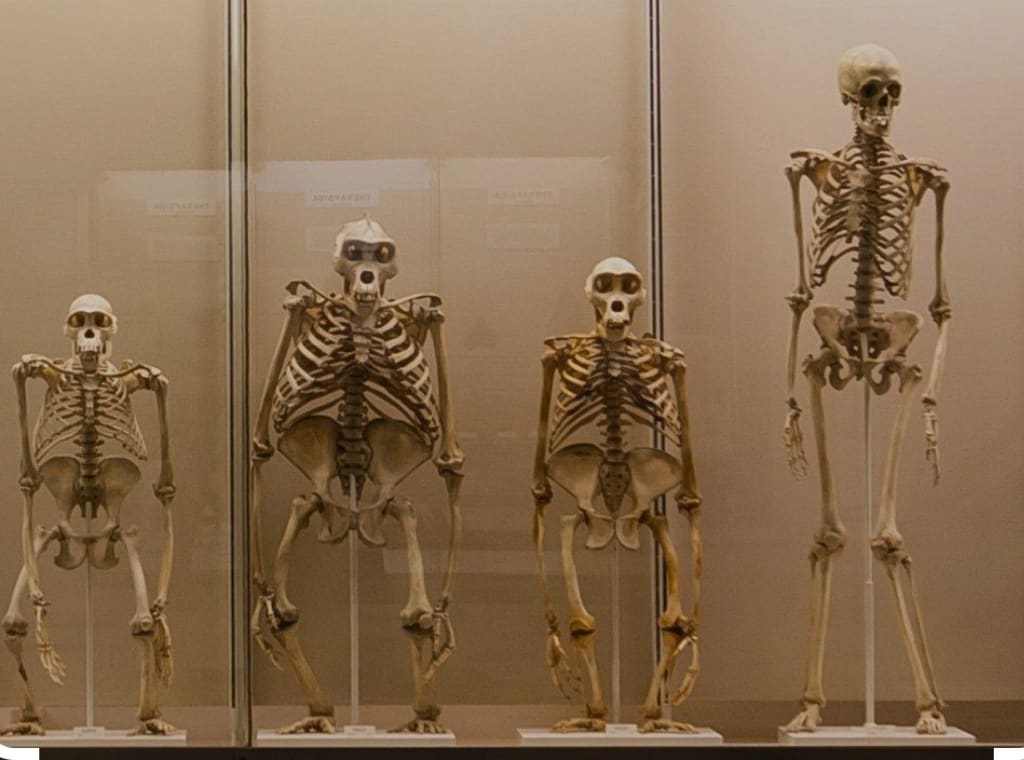cell phones and changing of the shape of our bones
harms of cells on our physiology

Studies have shown that cell phones are slowly changing the shape of our bones. David Shahar and Mark Sayers, both specialists in biomechanics at Australia's University of the Sunshine Coast, studied how mechanical laws apply to living organisms. This involves studying how humans run, fly, and even beat their wings. Osteology (the study of bones) is also involved in this research and helps us learn about an individual's life from their bones. It has been known for some time that skeletons adapt to a person's lifestyle every set of bones tells a story. For example, some unusually large skeletons were found on the Pacific island of Tinian in 1924—stone structures nearby explained their substantial nature.
There has been much discussion about how modern technology is affecting the way our bones are developing. One of the issues is that the term "skeleton" can be confusing because it can refer to different parts of the body. The part of the skeleton that is being studied in this article is called the external occipital protuberance or EOP. It's a growth of bone that is located at the back of the skull. The EOP helps connect certain muscles to the skull, and its appearance has a lot in common with an anchor. There is ongoing discussion about how this phenomenon might be impacting young people's development.now let's go back to what the researchers were actually doing with the study in the first place. by looking at chiropractors x-rays of people aged between 18 to 86 they wanted to get an up-to-date insight into how skeletons change because a lot of these x-rays were investigating things like neck pains there's also an elements of what consequences these changes may have on our health. Shahar has sayers noticed that in young people the EOP appeared to be more widespread from this they hypothesized that young people's posture while constantly checking their phones and tablets was a major factor. during screen time the neck instinctively cranks forward. the theory is that by craning forward extra pressure is put on the area where sculpt meets muscle to compensate the EOP gets gradually longer, growing to around several milliliters. the effect has also referred to as text neck the fundings also revealed that it was mostly found in men in 2016 Shah Harden sayers reported a bigger Yi Opie and 67% of men compared to 20% of women. based on a test group of 218 people, by 2018, they had looked at 1200 people with males appearing to be 5 times more likely to get these large texts necks. but what is the potential impact on humanity? we hear a lot about the radiation from phones potentially linked to cancer. but can using a mobile device actually create significant health problems in the body? this new report has opened up the debates on this topic since. it's the first case where experts are explicitly pointing out how tech is affecting our bodies. Shahar & sayers described the elongated your PS as a degenerative process. implying things are only gonna get much worse for young people. if they keep using their devices, there is also something called text thumb or thumb arthritis where thumb can develop serious problems similar to the dreaded carpal tunnel syndrome. however the study of EOPS and referring to them as horns where spikes has been criticized by others in the press. experts point out that the report is not conclusive and like any scientific paper it makes assumptions. archeologists will tell you that longer skull bones are nothing new and that there are especially common in males. the general view according to the studies critics is that there simply isn't enough hard evidence to back up the claim that you are actually turning into Hellboy by using your cell phones. so are Shahar and sayers on to something or have they simply taken along established facts and fitted them into their own explanation. either way there's no denying the dramatic impact that technology has on our lives the idea that upcoming generations are changing due to constant interaction with their devices is really a serious issue that needs to be addressed. ultimately it will be the archaeologists of the future that make that call maybe don't even have big spikes sticking out of the back of their necks in the future.





Comments
There are no comments for this story
Be the first to respond and start the conversation.